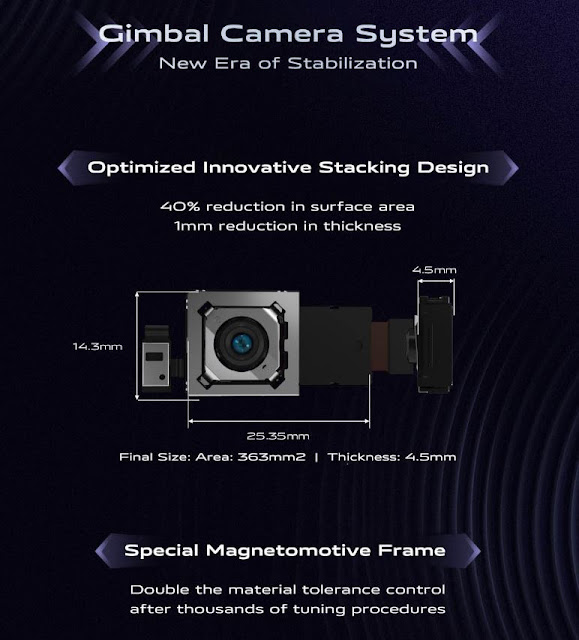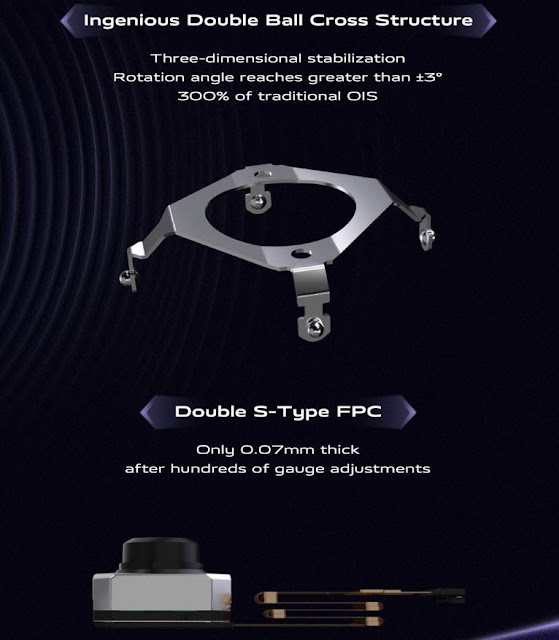Hi Friends,
vivo ushers in a new era of anti-shaking photography and videography with Gimbal Camera System
vivo’s latest X50 Pro flagship smartphone features the ground-breaking Gimbal Camera System, which revolutionizes the mobile photography experience by delivering super stabilization, enabling users to capture professional-quality photos and videos while in motion.
“The Gimbal Camera System reflects vivo’s commitment to innovating for the purpose of improving user experiences,” says Hawa Hyath, Marketing Director, vivo mobile SA. “Our research found that shaking is a major pain point for consumers who want to take high-quality photos and videos. Leveraging our leading technological innovation capabilities, we developed a solution to install a miniature gimbal module inside X50 Pro, which provides more frame stability than traditional stabilization technologies.”
“X50 series redefines the professional photography experience with cutting edge technology and a people-centric design. X50 Pro’s gimbal innovation helps users to express themselves and discover a new world with their smartphone camera,” she adds.
Built-in Gimbal Achieves Super Stabilization
Using pivots, mounts, gyroscopes, and sensors, a handheld photography gimbal allows a camera to rotate smoothly along an axis, which offsets shaking and stabilizes the frame. X50 Pro’s built-in miniaturized gimbal module applies the same technology to stabilize the main camera, offering an enhanced anti-shake capability to users.
While shooting with X50 Pro’s main camera, if the smartphone tilts, pans, or rolls, the Gimbal Camera System’s gyroscope will calculate the direction and displacement of the shake. Using electromagnetic forces, the entire gimbal module will move in the opposite direction to compensate for shaking. Throughout this process, the module adjusts its position with a refresh rate of 100Hz to stabilize the frame at all times.
Ordinary stabilization technologies target small-angle shaking, but X50 Pro’s Gimbal Camera System is optimized for motion shaking, making it more useful in real-world user scenarios where stabilization is needed. The Gimbal Camera System uses a double ball cross structure to achieve triple axis rotation, ensuring three-dimensional stabilization and a wide anti-shake area. In contrast, electronic image stabilization (EIS) offers no physical stabilization, using algorithms to crop the frame, while traditional optical image stabilization (OIS) only moves on a two-dimensional axis with an anti-shake angle conversion of ±1°. With traditional OIS, only the center of the frame is stable, but the edges are blurred.
On X50 Pro, since the entire gimbal module moves in all directions to counter shaking, the anti-shake angle conversion reaches more than ±3°, 3-times that of traditional OIS. This ensures that the entire picture is clear without any image distortion or cropping. This enables professional grade photography and videography of life in motion, from sporting events to wildlife scenarios.
The stabilization effects of the Gimbal Camera System also increase X50 Pro’s overall light sensitivity, enhancing the Superb Night Camera effect and allowing users to capture fine details at night. By enabling users to take easy snapshots and film high-quality videos in challenging lighting, the X50 Pro’s gimbal powers a truly revolutionized nighttime photography experience.
Innovation in Technology and Design
X50 Pro’s Gimbal Camera System is a product of vivo’s capacity for innovating to build cutting-edge consumer technologies. The highly-complex gimbal structure was originally 588mm2 and 5.5mm thick, but after continuous adjustment, vivo’s engineers reduced its surface area by 40 percent to 363mm2 and its thickness to 4.5mm. The final stacking design balances the exterior look and interior layout, allowing for a slim phone with an advanced quad camera on the rear, consisting of the 48MP main camera, along with 13MP, 13MP, and 8MP lenses. The Gimbal Camera System also has adequate structural protection, and its distance from the screen is only 0.13mm.
To reduce resistance from the flexible printed circuit (FPC) connected to the lens module, the Gimbal Camera System uses the longest and thinnest double S-type FPC in vivo’s history, with a length of 53mm and a thickness of only 0.07mm. This engineering marvel allows the module to rotate more freely and encounter minimal resistance within the phone.
The gimbal module also has an innovative software component—the Gimbal Radar, an on-screen animation in the photo preview interface. An animated ball reflects the movement of the actual gimbal, which indicates when the frame is stable and guides users to shoot clear images and videos.
Beyond the functional value of advanced technologies, vivo aims to integrate unique people-centric design concepts into its products, aiming to co-create a personalized and active lifestyle aesthetic with consumers—an aim reflected in X50 Pro. Users can view the actual movement of the Gimbal Camera System by looking at the main camera lens. In addition, due to the Gimbal Camera System, the main camera looks like a “big eye” on the rear of X50 Pro, serving as a signature design element.
Going through all the features had me glued to the smartphone and I hope that I will get to use the same for a long time as I always want to use the best of the best camera smarpthones in the market and share my captures on the Travel related Instagram channel @thelifesway or day to day living Instagram channel @araijain.
Cheers!!!
Support me if you like reading this blog post by buying me a cup of tea or coffee - https://www.buymeacoffee.com/TheLifesWay Contact at thelifesway@gmail.com to collaborate and promote your services and products. Subscribe to my YOUTUBE Channel for giveaways, product reviews and mystery unboxings. #TheLifesWay #9YearsofTheLifesWay. Namaste!





